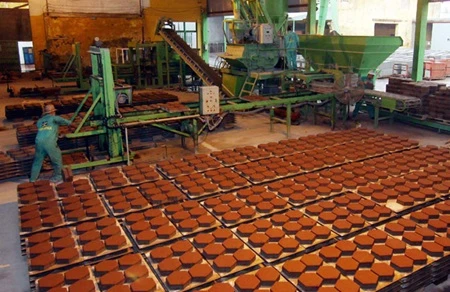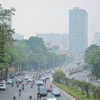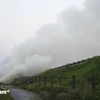Quang Ngai (VNS/VNA) - The smoke and dust caused by traditional brick kilns has long been considered a threat to the environment and residents' health, but many obstacles stand in the way of their elimination.
Hundreds of these kilns still exist in central Quang Ngai province, although all owners of the old-style brick kilns were forced to stop using them and dismantle the kilns by August 31, 2018.
After decades living near a brick kiln, Nguyen Van Tai in Nghia Phuong commune, said: “Every day we inhale dust and smoke from brick kilns. We can’t breathe, especially the kids.”
According to a report by Kinh te & Do thi (Economic and Urban Affairs) newspaper, all old brick kilns in the province are based on obsolete technology and release huge amounts of pollutants, affecting people’s health and crops.
People living near brick kilns said that local authorities have not yet handled the issue, so owners of the kilns had found ways to delay demolition.
It takes a brick kiln 20 to 30 days to produce a batch of products, but the kilns do not have a system to reduce smoke.
Poisonous smoke was released into the air affecting residents' health. Many kilns are too old, making noise, and are at risk of exploding posing a threat to workers, said Nguyen Thi Thu, a resident in Song Ve township.
Although the kilns are harmful, they have brought a stable income to many households in the village in recent years and have created jobs for hundreds of people, owners said. Most local residents earned their living through working at brick kilns.
On June 6, 2018, the Quang Ngai People’s Committee released a decision banning all craft brick kilns in the province. Localities were asked to destroy all existing kilns in the area before August 31, 2018.
According to a report by the provincial Construction Department, the province has about 250 traditional brick kilns, 51 of which have been eliminated.
At present, 192 kilns are in operation. Tu Nghia district is home to the largest number of old-style brick kilns in Quang Ngai province with about 85, mostly in Nghia My, Nghia Phuong and La Ha River Town, located in residential areas and near schools.
A leader of Tu Nghia district said brick kilns have brought great benefits to owners, so they have sought ways to delay the dismantling.
They deliberately stockpiled large quantities of clay, coal and firewood in the kiln and still secretly transported more raw materials for daily production, the official said.
Le Trung Thanh, Chairman of the Tu Nghia District People's Committee, admitted that the removal of old brick kilns in a short time was really difficult for local authorities.
“The biggest obstacle is creating jobs for hundreds of workers and funding support to change careers for people. In order to do this, a huge amount of support is needed, while the district's budget is limited and unable to respond,” Thanh said.
In the future, together with encouraging brick kiln owners to stop their operation, the local government will facilitate the purchase of unsold materials at brick kilns, as well as consulting with locals on alternative careers to come up with the best solution, according to Thanh.
The district has requested communes and towns that have rented land to brick kiln owners to immediately terminate the land lease and return the land to local authorities before April 20.
Electricity firms are also required to stop supplying electricity to these establishments.
The local government set a target of eliminating traditional brick kilns before April 30, said Thanh.-VNS/VNA
VNA





















